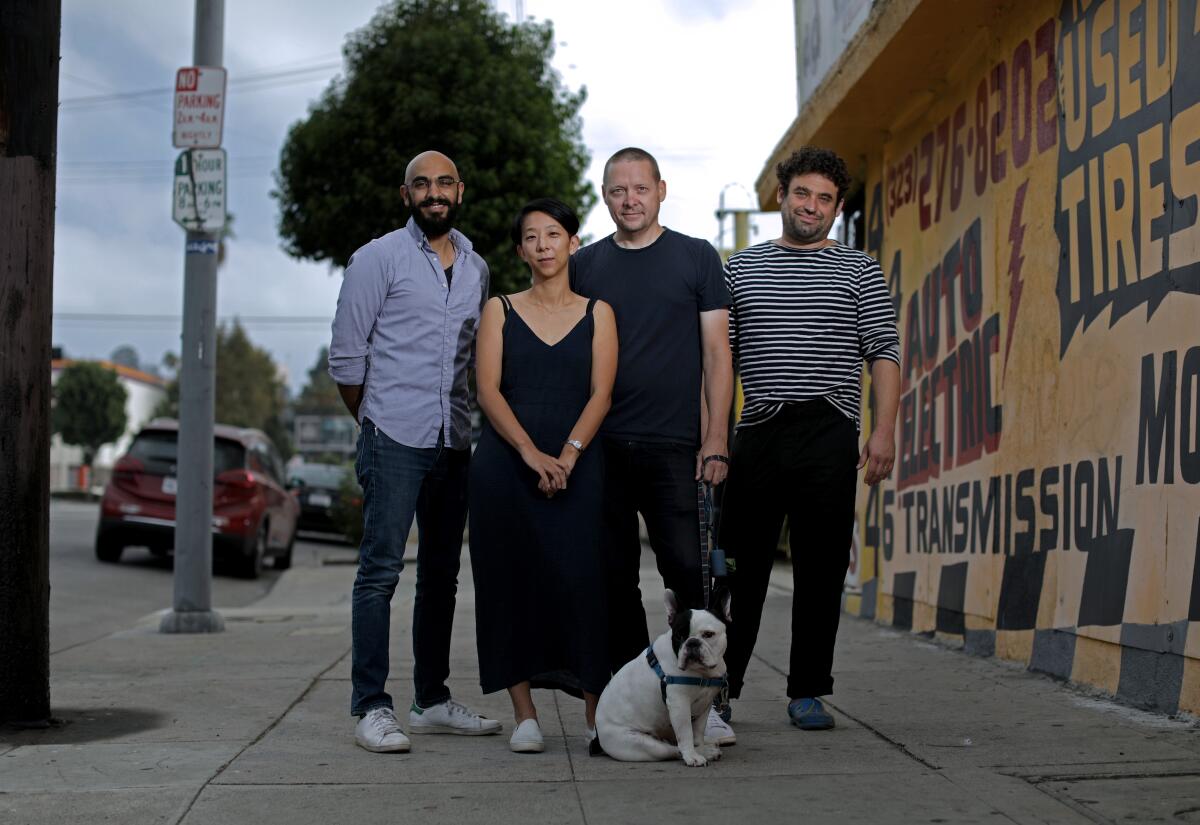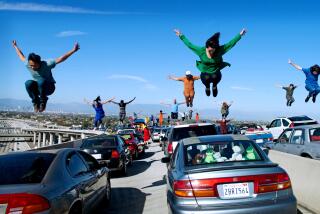L.A., meet your new streetlight. The winning design marks the first revamp since the 1950s
“Streetlights are the silent giants of the city, always standing ready to protect.”
Norma Isahakian does not skip a beat answering a question about what streetlights mean to Los Angeles. As the recently retired executive director of the city’s Bureau of Street Lighting, she has spent decades thinking about what she calls “the furniture of the city.”
That furniture is now poised for an update: On Thursday, the city will unveil the winner of its L.A. Lights the Way streetlight design competition. Launched in December, the competition drew entries from 110 teams around the world.
The goal, Isahakian said, was to find a design for a new standard streetlight that would be iconic to Los Angeles — a unifying thread tying diverse neighborhoods together as the city readies for the global limelight brought by the 2028 Summer Olympics.
The city’s streetlight design competition drew more than 100 entries. Did the right design win?
The competition, the first of its kind in L.A., also was striving to make up for historic inequities that resulted in affluent neighborhoods graced with beautifully designed streetlights, while other areas were made to settle for a much more utilitarian aesthetic.
Team names and locations were not attached to the submissions when a panel of six professionals in design, architecture, city planning and public works judged them, so it was with surprise and delight that the jury discovered it had selected a design from a small, L.A.-based collective called Project Room.
Christopher Hawthorne, chief design officer for the city (and former Times architecture critic), called the selection of Project Room a “a really nice and unexpected bonus.”

“It validated our decision to hold a competition, because this is not the kind of proposal or office that we would have found through the usual process,” Hawthorne said of the Project Room team, composed of Isaac Resnikoff, Sumit Sahdev, Sandy Yum and Joakim Dahlqvist.
Founded by Resnikoff, a contemporary artist, Project Room is not a design firm in the traditional sense but rather a “collaborative platform” that pulls artists and designers together to work on various projects.
“I see Isaac as a curator,” Dahlqvist said. “He noticed that there was this competition, and he identified us as a team, and wanted to work with us. We took it on and surprisingly won. It’s very humbling.”
The city’s streetlights have not been revamped at this magnitude since the 1950s, said Isahakian, noting that the Midcentury movement away from the ornate designs of the 1920s and ’30s led to a more modern, car culture-driven and cost-effective aluminum pole in the ground topped by a purely functional light.
The city has more than 400 designs in the form of more than 220,000 streetlights that dot the urban landscape. “Each of the various designs speaks to the history of the city,” Isahakian said.
The new SoFi Stadium will be home to the Rams and Chargers, but it holds the potential to be so much more to the communities around it.
Project Room’s winning entry seems to say that L.A. is banking on creativity, elegance and function as it moves into the 2020s. Renderings of the new light reveal a bundle of slender hunter green tubes secured with a horizontal metal collar. The tubes are fatter at the bottom and become more slender toward the top, before branching out individually like perfectly curved vines. Name of the design: “Superbloom.”
It does resemble an exotic plant that tips its elegant hat to its Art Nouveau and Neoclassical cousins while retaining a distinctively futuristic aura.
Dahlqvist, Project Room’s lead designer on the project, called streetlights a “private obsession.”
In creating the winning design, he said the team sought to produce a streetlight that “can answer to new needs and functions of the contemporary city without imposing itself too much onto the streetscape.”
Streetlights present an interesting design paradox: They must disappear, but they also must stand out. They must have individual character, but they also must have broad appeal to the masses.
You rarely notice a streetlight, Isahakian joked, until it goes out.
Project Room’s streetlight is equipped to accommodate a “smart city” future that includes mobile and solar technology, air quality and traffic monitors, sensors allowing it to dim up or down, EV chargers and LED lighting at the very top that can change colors to announce an emergency or simply to create a mood.
It has hooks for shade sails and decorative banners, it can be outfitted with a bench or decorated with a cultural or historical placard. It has long, swooping arms to light broad boulevards and smaller arms to shine light on pedestrian walkways.
“We are definitely trying to lay the groundwork for when the city starts to fold more technology into its infrastructure,” said Project Room collaborator Yum.
Yum is the only L.A. native on the team, and she said streetlights are part of her earliest memories of being a kid in a car driving through the city.
The streetlights, she recalled, would blink on and off as she sped beneath them.
“I remember the orange hues, so warm and friendly,” she said. “We were hoping our light would also feel that way.”
Dahlqvist made it a COVID-19 pandemic pastime to drive to various parts of the city, walking neighborhoods he had never been to before, paying careful attention to the streetlights and how they lend themselves to the distinct character and feel of each area.
The final design, he said, is informed by the city itself, “in terms of the old streetlights, but also in a love for the everyday fabric of the less traveled parts of L.A. as well.”
The new lights won’t hit the streets until 2021 at the earliest, and neighborhoods equipped with beloved historic lights will keep them, Isahakian said.
But when the need arises for illumination in the dark, the freshly imagined silent giants of the city will be ready to light the way.
More to Read
The biggest entertainment stories
Get our big stories about Hollywood, film, television, music, arts, culture and more right in your inbox as soon as they publish.
You may occasionally receive promotional content from the Los Angeles Times.











